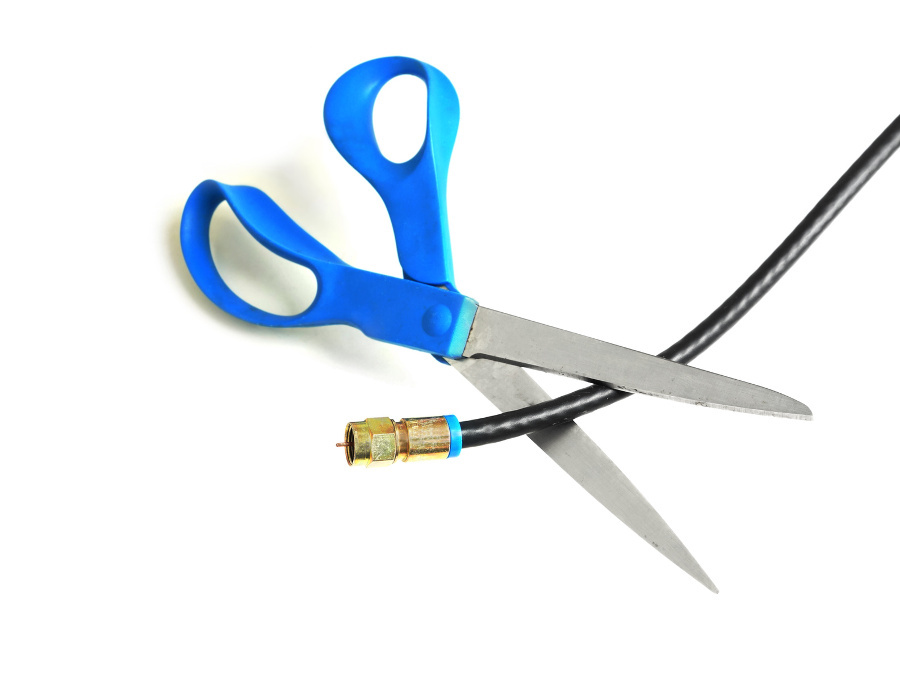Cord-cutting’s impact on ESPN has attracted a lot of attention over the past few weeks. With a contrarian opinion, Allen Kenney asserts it’s a bit overblown.
If you’ve been following the news lately, you’ve probably read a story or two about the cable industry that goes something like this:
A staggeringly large number of U.S. households have cable television subscriptions. In the last couple years, however, some people started “cutting the cord” or scaling back the size of their packages. It’s a trend that appears to be accelerating.
This poses a problem for ESPN, which makes a mint by charging the cable companies rich fees on a per-subscriber basis. The best part of the deal right now for ESPN is that people who don’t even watch its networks have to pay for them. However, if ESPN isn’t getting “subsidized” by people who don’t watch it, the Worldwide Leader could be facing something of an existential crisis.
At the very least, ESPN is facing significant disruptions to its business model, forcing its braintrust to re-evaluate the network’s entire way of doing business. As such, the days of ESPN playing sugar daddy to sports leagues are over.
I used to believe this story, too, but it’s actually as ludicrous as the most preposterous idea that Stephen A. Smith has ever heard. Allow me to explain.
*Subsidy, shmubsidy
The carriage deals struck by ESPN and the cable companies aren’t done in a vacuum. The cable companies are selling bundles of channels, so the price of any individual channel is set within that context.
The fact that we talk about network fees on a per-subscriber basis obfuscates what cable subscribers are actually buying. Instead, think of your monthly cable bill not as an aggregation of individual fees for each channel, but as a flat rate for your TV entertainment smorgasbord.
In that sense, people who don’t watch sports don’t subsidize my viewing habits any more than I subsidize Lifetime watchers. We’re paying the same rate for the same product, the bundle of channels.
*All things being equal, we can assume that the quantity of entertainment being supplied by cable television is equal to the quantity demanded at the current price point.
This is important. Given that sports content remains married to the cable bundle, it implies that sports media rights aren’t overpriced.
ESPN makes more off the system than other channels because it attracts more viewers. Not only that, but its viewership is actually growing at the same time other channels are bleeding eyeballs. That’s how you justify those steep carriage fees.
*Cord-cutting is a function of competition.
It’s no coincidence that cord-cutting has grown as the television options outside the traditional cable model have grown. Whereas consumers once had just one viable avenue for the kind of entertainment that cable TV could provide, they can now get their entertainment through services such as Netflix and YouTube at relatively cheaper prices. In other words, the growing amalgamation of over-the-top options are combining to undercut the cable companies for a certain segment of customers.
So, it’s not that cord-cutters are unwilling to pay the prices the cable companies charge. The proliferation of alternatives courtesy of the Internet and new technology means that they don’t have to. They’re paying less (for the time being) and getting only what they need, which apparently doesn’t include sports.
*How will the market react if cord-cutting stays on this trajectory?
The industry will continue to evolve.
The costs of the cable bundle will go down. The Comcasts of the world will start charging more for Internet service in response to the growing amount of content streaming, shifting their business model to better capitalize on the dynamics of the market. Some cable programming will vanish or migrate online. More programming will go straight to Netflix and other streaming services.
ESPN will almost certainly start putting out over-the-top packages to matches the preferences of younger consumers.
But don’t mistake a market in flux for an economic bubble. Given what we know about pricing for cable right now, there’s nothing to suggest a significant spike in the cost of television entertainment is coming for sports fans. And so long as it owns that coveted sports content, there’s no calamity waiting around the corner for ESPN.
*So why all the doom and gloom in the media about ESPN’s future?
Let me throw out a quick theory: ESPN wants people to think its future is more cloudy than it really is.
ESPN’s spending on both rights fees and talent ballooned in recent years as FOX and NBC became more active in the sports market. There’s still a Big Ten TV deal to be addressed in the next couple years. On top of that, the Bill Simmonses and Colin Cowherds of the sports media world are starting to ask for more money.
One way to tap the breaks on those increases might be to get everyone believing the market is overheated. A flood of media coverage about spiraling costs and technological disruption might do the trick.








Comments are closed.